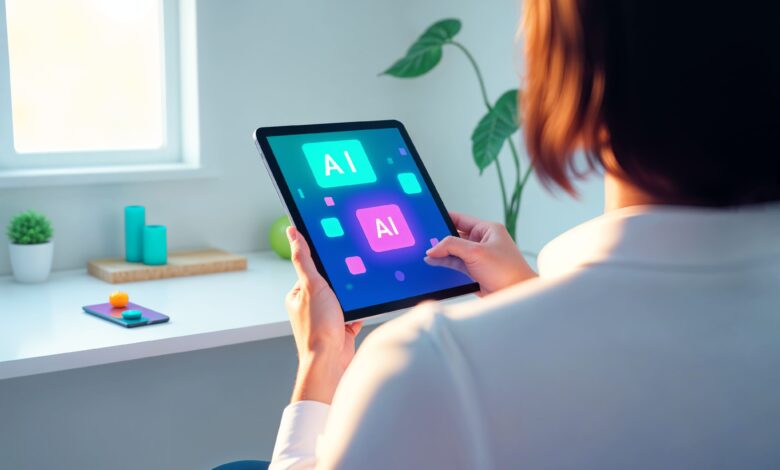
The translation industry is going through major changes. AI, which used to be a support tool, is now an important component of language services. On the one hand, these changes bring speed and efficiency to the work of translation providers. But on the other hand, it brings new challenges that force businesses to adapt to the new reality.
The shift in requests
Many clients now handle simple translation tasks using free AI tools internally. That has reduced the volume of routine work for translation service providers. But from the broader perspective, we see that these changes have also triggered higher expectations around cost and quality of professional translation.
A growing number of clients assume that since machine translation is available for free, language services should be much cheaper. Others, influenced by their experience with free AI tools, are now expecting lower costs for the same quality standards. This assumption has created constant price pressure across translation businesses.
All of these factors have forced providers to educate clients about the value-added services that justify professional fees: expertise, accuracy, cultural appropriateness, and industry specialization.
At the same time, there is a growing trend of accepting “good enough” content. As AI-generated text becomes more common, quality standards have started to drop in many areas. To save costs, some businesses now settle for basic translations instead of providing their best propositions.
But despite many concerns that AI would reduce the need for translation, the global demand for multilingual communication is growing. We now see an increase in requests for complex, high-stakes translation. Today’s projects often go beyond basics – clients need localization, SEO, cultural adaptation, and regulatory compliance. These factors require deep expertise and specific knowledge that AI, on its own, still cannot deliver.
In highly regulated fields like law, pharma, and defense, certified and sworn translations are important. And while AI speeds up delivery, it requires strong human QA and content control.
AI in the translation workflows
AI tools have been used in the translation industry for decades, long before ChatGPT became widely adopted. Machine translation engines, CAT tools, and automated quality assurance systems have been standard supporting tools for professional workflows.
From now on, AI plays an important role at nearly every stage of the translation process. For example, a machine translation engine generates first drafts, which human translators then improve. It helps language service providers speed up the delivery while keeping costs under control. Automated quality assurance systems detect inconsistencies, missing translations, grammatical issues, and formatting problems to help ensure the accuracy of the content. Text analysis tools assist by highlighting specific linguistic patterns, analyzing complexity, and identifying potential problem areas, which helps translators focus on the more important tasks.
Translation memory and terminology management systems help support consistency across large-scale projects. They allow translators to reuse previously translated text and apply approved terms consistently throughout the text. In more dynamic settings, speech-to-text and text-to-speech technologies support real-time translation and transcription needs. Even simple features like predictive typing and autocomplete now boost productivity by speeding up input and reducing translator fatigue.
Together, these AI-driven systems quietly shape how translation work gets done these days. And it’s surely more efficient, consistent, and at a greater scale.
Shifting translator competencies
With the development of AI, the expectations of translators are rising as well. Technical knowledge has become important because translators must work more with various AI-driven tools, CAT systems, machine translation engines, and quality assurance programs.
Post-editing skills have become vital. Many translators now spend more time refining machine-generated translations rather than translating from scratch. This requires different competencies – the ability to quickly identify and correct errors while improving readability and ensuring consistency.
In an AI-driven environment, evaluation skills are more important than ever. Translators must assess the quality and appropriateness of AI-generated content. Particularly when working with technologies that may produce realistic but incorrect translations.
Beyond these technical and evaluative skills, linguistic creativity is a critical part of working with AI. While AI can handle huge amounts of data, it often struggles with conveying subtle cultural context, humor, or specific stylistic choices that are crucial for effective communication. Human translators handle this part, ensuring that the translated content resonates with the target audience authentically.
This mix of tech skills and cultural knowledge shapes what it means to be a translator.
Future of AI in the translation industry
Large language service providers are encouraging their teams to actively use AI tools, but small and medium-sized enterprises often have advantages in adopting new technologies quickly due to their willingness to experiment with usage-based AI models.
The boundaries between industries are becoming less defined. Some IT companies and customer service centers are now adding translation to the list of services they offer. At the same time, traditional language service providers are expanding their operations into different fields such as IT support, social media management, and digital content services. This trend toward diversification is expected to accelerate in the coming years.
The industry is also likely to experience a wave of consolidation through mergers and acquisitions. Smaller providers may increasingly be absorbed by larger companies, including those that have not previously been active in the translation sector but are entering the space due to growing demand and technological integration.
The translation business will endure and change, but not vanish. A new generation of entrepreneurs is emerging, focused on using and optimizing LLM to address specialized issues. They have the potential to generate substantial wealth while upending established business models.
The leading language service providers will be those who present themselves as strategic partners rather than just service vendors, providing specialized knowledge, cultural intelligence, and experience that AI can’t match. The future lies in hybrid models that combine AI efficiency with human creativity and expertise. This strategy is already proving results: the narrative is shifting from “AI as a replacement” to “AI as an assistant” for professional translators. For example, e-commerce company Polhus utilized Crowdin’s AI Translation tools and found that 70% of its AI-generated translations were ready for publication immediately after the AI translation. Human linguists were making only minor refinements to the 30% rest. This demonstrates the ideal workflow: AI handles high-volume work, freeing up translators to focus on culturally sensitive content that builds genuine customer connections. Such localization platforms continue to evolve every month, rather than yearly. The connection between expert translators and AI is set to define the next generation of localization.
Since AI has already revolutionized the translation industry, the question of whether it will continue to do so is no longer relevant. The real challenge is to navigate this transition strategically, combining technological capabilities with human expertise. Only then can we meet the changing needs of clients in today’s dynamic environment.




